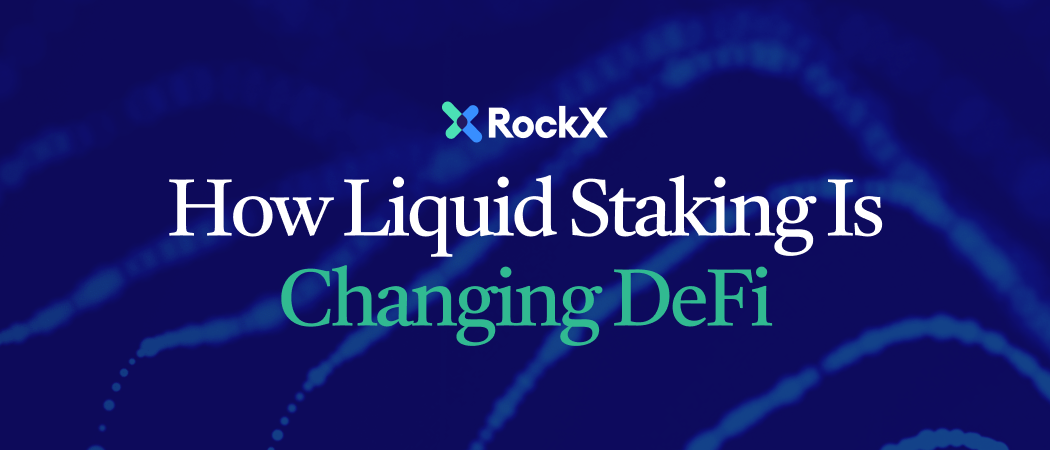Decentralized finance (DeFi) refers to financial applications built on blockchain technology that aim to provide similar services as traditional financial systems, but in a decentralized way without intermediaries. Some key aspects of DeFi include self-custody where users maintain control over their assets without needing an intermediary, permissionless access to financial services globally, and the use of smart contracts to automate processes like lending and trading in a transparent manner. It first emerged with the introduction of the Ethereum blockchain in 2015, but really started gaining traction with “DeFi Summer” of 2020, kickstarted by the infamous COMP airdrop. Since then, DeFi has undergone many phases, each bringing forth new innovations from dedicated dApp developers. One of the more recent examples of this is liquid staking.
Liquid staking is a novel way of staking crypto on blockchains without sacrificing any liquidity. Typically, representative tokens, otherwise known as liquid staking tokens (LSTs), are given to the user upon staking. This way, users may support their blockchain(s) of choice and earn yield for doing so, and still have that fund be liquid. Using their LSTs, they may interact with other DeFi protocols and earn an additional yield on top of their staked amount.
How Liquid Staking is Changing the DeFi Space
Through the invention of liquid staking, the DeFi marketplace became much more vibrant, with so many more earning possibilities unlocked with the additional liquidity in the industry. Liquid staking is opening up new investment opportunities in DeFi by lowering the entry barrier for staking and allowing greater liquidity compared to traditional staking where funds are locked up. It fractionalizes validators, allowing investors to stake with smaller amounts of crypto. This also opens up a secondary market where liquid staking tokens can be traded, giving investors more flexibility to access yields from staking while maintaining control over their assets.
The attractiveness of liquid staking is undeniable, with reports from Dune Analytics showing that the amount of ETH staked has skyrocketed by nearly 95% to over $40b, up from $22b. However, nearly half of this amount is held by just three staking providers. With this, we see the limitations of liquid staking, and how it can actually limit decentralization on Ethereum.
Liquid staking also carries risks for retail investors, including smart contract risk, liquidity risk, and regulatory uncertainty. To combat these risks, retail investors should do their due diligence and thoroughly research any protocol before staking through that provider. As liquid staking protocols rely on smart contracts to function, all liquid staking smart contracts should be properly audited. For instance, Bedrock’s underlying smart contract was audited by Peckshield, an industry-leading audit firm. This minimizes smart contract risk.
Current liquid staking solutions might not yet be enough for institutional investors. Institutional investors face more risks surrounding liquidity and regulatory uncertainty. As institutions often have larger funds, the need for sufficient liquidity for any liquid staking protocol becomes highly relevant. On the secondary market, one might be unable to exchange or withdraw LSTs if liquidity is low. However, they should still be able to do so via the liquid staking provider’s own protocol. Global cryptocurrency regulations are still evolving, so it is absolutely essential to avoid the co-mingling of funds to prevent future asset freezes.

The Future of DeFi
DeFi’s major advantage is the concept of self-custody. It differs from traditional financial markets, in which an intermediary is always required to facilitate transactions, whether trading, custody, or lending. DeFi, on the other hand, uses an automated smart contract, allowing everyone to verify it, reducing intermediary risks. Additionally, DeFi offers the benefit of being permissionless, which enables anyone to access a DeFi protocol from anywhere in the world. As we look at the current stage of the market, we see their merits and drawbacks in a market that needs more innovation.
Liquid Staking in the Context of DeFi
Liquid staking has the potential to revolutionize the DeFi market by providing users with the ability to access liquidity and capital more easily. However, it raises concerns about the potential misuse of liquidity and capital, as well as the need for stricter regulations to ensure the security of the market.
By giving more people more access to staking, liquid staking has the potential to push decentralization to the next level. This could lead to greater access to financial services, as well as improved liquidity and capital efficiency. In addition, liquid staking could provide investors with a wider range of options when it comes to their investments.
The merge between DeFi and CeFi seems to be impending and unavoidable – but will this make DeFi a more vibrant ecosystem where more innovation happens or will this destroy the ethos of decentralization? With liquid staking revolutionizing DeFi for institutions, the industry is set to grow in ways we’ve never seen before, but how will that compromise or fortify the decentralized ethos? In the meantime, it is all we can do to ensure that we support decentralization in whatever way we can – to be compliant, transparent and build stable and secure smart contracts.
Learn More
Want to know more about this topic? This article was a recap of our CEO, Zhuling Chen’s conversation with Michelle Martin on MoneyFM’s Your Money podcast. Listen to the podcast episode by clicking on the button below.









